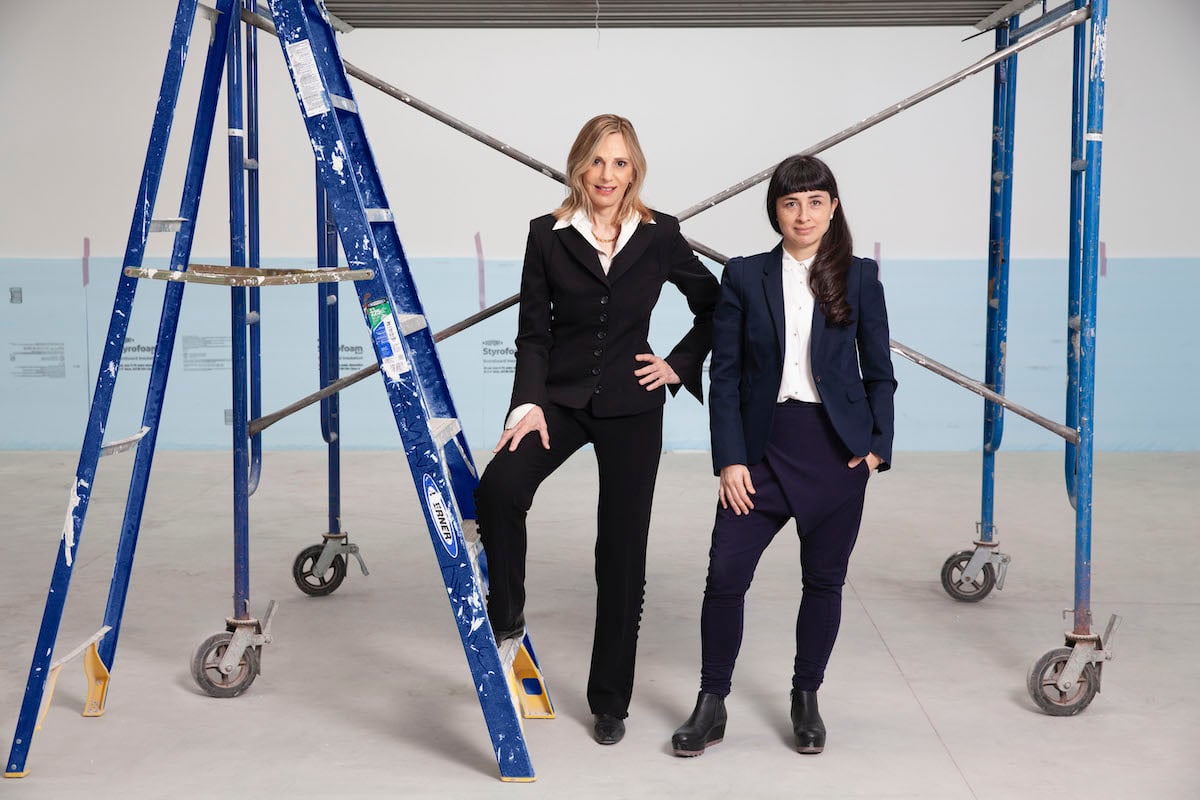
Three years after it was first announced, Amant, a nonprofit art institution in Brooklyn, will open its doors to the public next month.
Conceived as a hybridized space for artists to make and show work, Amant was founded by Lonti Ebers, a prominent collector and MoMA trustee who also serves on the board of the Center for Curatorial Studies at Bard College.
It’s not a museum, per se, which itself is interesting: after all, when Ebers announced Amant in late 2018, it was right after she had reportedly resigned from the New Museum’s board due to director Lisa Phillips asking for a larger compensation package.
Some assumed that Ebers’s new venture would arrive as a riposte, likely in the form of a museum built in her own image.
Amant exterior detail. Photo: Naho Kubota. Courtesy of SO-IL and the Amant Foundation.
That wasn’t the case. The raison d’être of the space isn’t to trot out her personal trove of some 1,000 artworks. In fact, Ebers’s collection will scarcely be shown at Amant.
Instead, the institution will serve as an exhibition platform, performance space, and studio for residents.
“Amant’s goal at conception was to assist artists and creative producers to work in New York where costs have made it increasingly difficult. Its programs, presented in concert with its artists’ residency, is to encourage dialogue,” Ebers told Artnet News. “A personal collection-based space would limit our ability to achieve that.”
The layout of the center, designed by architect Florian Idenburg, co-founder of the New York-based firm SO-IL, doubles down on its multi-hyphenate identity. Rather than a monolithic building, Ebers ultimately opted for a campus approach.
Four buildings span two Brooklyn blocks in East Williamsburg, a neighborhood known for its (relatively) affordable studios. In total, the campus accounts for 21,000 square feet of interior space.
Amant exterior, under construction, April 2021. Courtesy of the Amant Foundation.
Ebers said the initial design was more consolidated, but “when the opportunity arose to acquire neighboring properties, it allowed for a design at a more domestic scale with the individual structures having discrete functions.”
“Using an industrial palette of materials, the buildings are both intimate and tough with the open-air landscaped courtyards being oases in the complex,” she added.
The $40 million budget for the project was funded entirely by Ebers. (She is married to Bruce Flatt, the chief executive of Brookfield Asset Management whose worth is estimated to be over $1 billion.) Amant’s operating budget hasn’t been finalized yet, but Ebers said it’s likely to be “few million dollars.”
The center is set to open June 5. Inaugurating the occasion is a survey of work by Grada Kilomba, a Portuguese artist and writer known for dealing with issues of race, gender, and the legacy of colonialism. It is Kilomba’s first solo exhibition in the United States.
Meanwhile, the institution’s New York residency will welcome its first group of four artists in September. (Amant also sponsors a summer residency in Siena, Italy, for mid-career artists.)
Interior of Amant’s performance space Geza, under construction. Photo: Naho Kubota. Courtesy of SO-IL and the Amant Foundation.
“Amant is a research and process-oriented platform, a space for showing, broadcasting, and making art public, while offering another place for reflecting, meeting, and creating community,” the institution’s artistic director, Ruth Estévez, said.
Estévez, a former curator at Brandeis University’s Rose Art Museum and the co-organizer of the 2021 São Paulo Bienal, says Amant will carve out a space in New York through its “ability to slow down the art-making process, enabling artists to work at their own pace through the evolution of projects over time.”